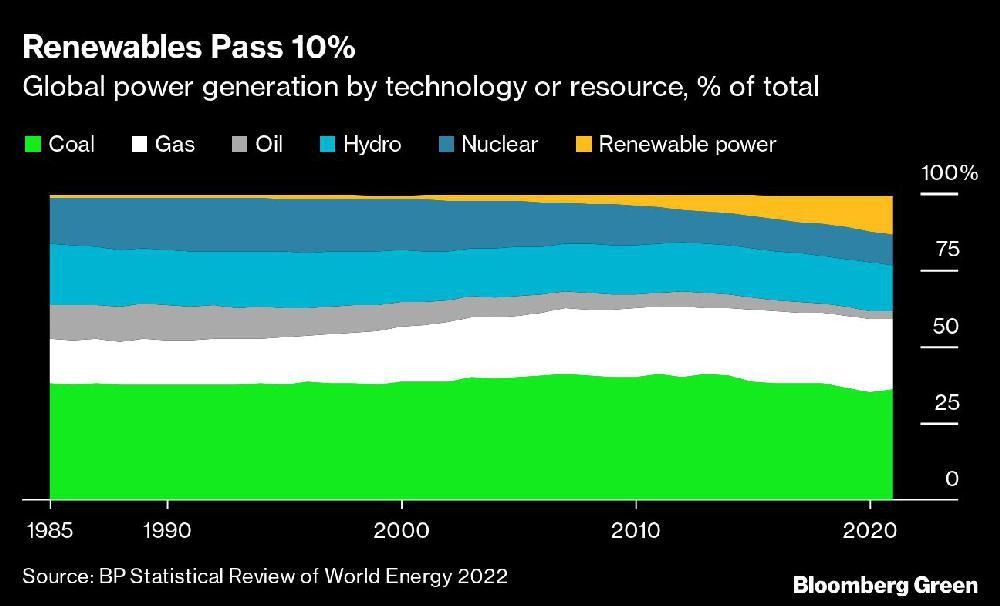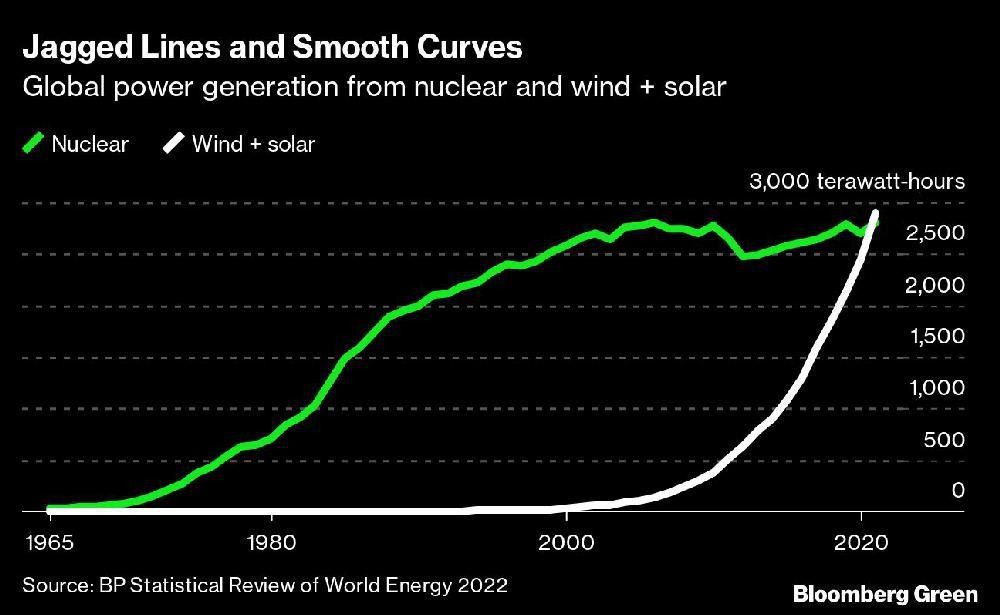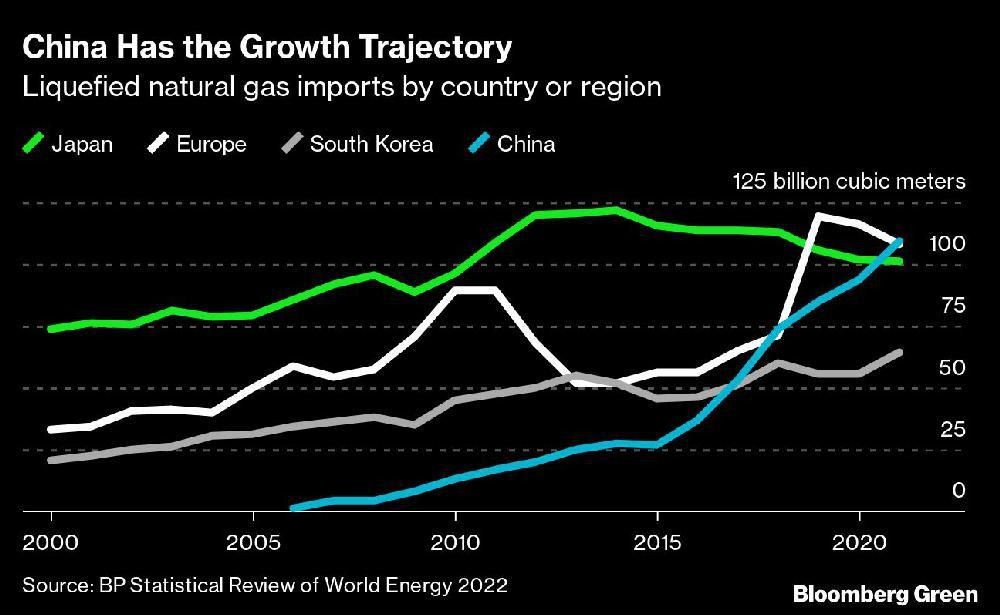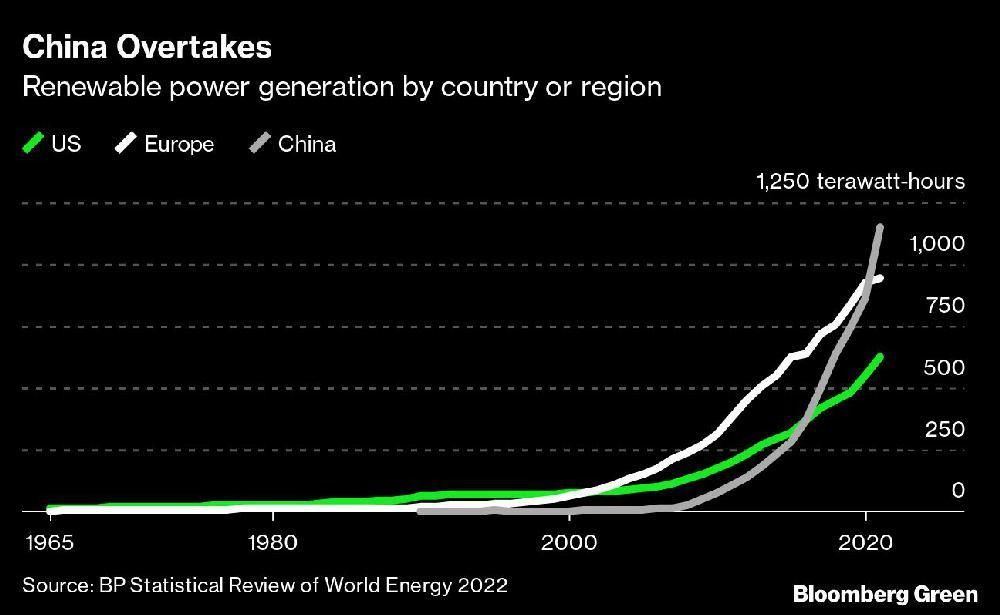Renewables now account for 13 per cent of global power generation
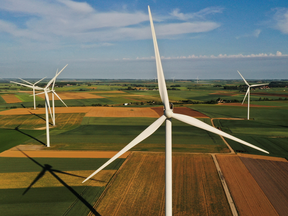
1. Renewables are now 13 per cent of global power generation
In 1985, coal-fired power was 38 per cent of global electricity generation. Hydro was 20 per cent, nuclear, 15 per cent; natural gas, 14 per cent; and oil, a bit over 11 per cent.
Three and a half decades later, coal is still king at 36 per cent, and gas has increased to almost 23 per cent. But every other major generation source of the mid-1980s has lost relative share — and more than gas alone can account for.
That is because renewable power (wind, solar, geothermal, biomass and small hydropower) has grown from 0.8 per cent of the world’s electricity mix to 13 per cent. Renewables passed the 10 per cent mark in 2019 and have added 0.8 per cent of market share — the same amount that they accounted for globally in 1985! — on average annually since 2010.
2. Wind and solar now generate more than nuclear power
Last year, I noted that although renewable power generation does not exactly compete with nuclear, renewables were winning. In 2020, all renewable power generation surpassed all nuclear generation. In 2021, wind and solar surpassed 10 per cent of global generation on their own, and overtook nuclear in annual generation.
2021 was actually a significant year for nuclear power. Nuclear generation increased more than four per cent, the biggest increase since 2004, thanks to Chinese fleet additions.
3. China is now the world’s biggest importer of liquefied natural gas
BP has tracked trade in liquefied natural gas since the year 2000. At the start of the century, Japan was far and away the world’s biggest LNG importer, taking in about 75 billion cubic metres a year. Europe as a whole was the next biggest importer, followed by South Korea. China did not even begin importing LNG until 2006.
4. China generates more renewable electricity than Europe
China, again, and a story and chart that should look familiar. In 1965, the United States generated 13 terawatt-hours of renewable electricity and Europe generated 3 terawatt-hours. Data on China’s renewable generation does not appear until 1990, at which point its 0.1 terawatt-hour was less than 1/600th of what the U.S. was generating.
Fast forward to 2016 and China has surpassed the U.S. and reached close to 60 per cent of Europe’s total renewable generation. Then, in 2021, China rockets past Europe, adding almost 290 terawatt-hours of total renewable electricity generation in one year. Last year, Japan and India generated a combined 302 terawatt-hours.
Share This:




 CDN NEWS |
CDN NEWS |  US NEWS
US NEWS 








